The Effect of Giving Shallot Extract (Allium Cepa L) and NPK Fertilizer on the Growth of Green Mustard Plants (Brassica Juncea L)
DOI:
10.29303/jpm.v20i1.6605Published:
2025-01-30Issue:
Vol. 20 No. 1 (2025)Keywords:
Green Mustard Growth; NPK Fertilizer; Shallot ExtractArticles
Downloads
How to Cite
Downloads
Metrics
Abstract
Plant growth and development require nutrients, which can be given through fertilization in the form of organic or inorganic fertilizers. This study aims to determine the effect of providing shallot extract, NPK fertilizer, and a combination of both on the growth of mustard greens. This study used a two-factorial, Completely Randomized Design (CRD) consisting of NPK fertilizer and shallot extract treatments, each using five levels with three replications. The parameters observed were plant height, number of leaves, leaf area, plant fresh weight, and plant dry weight. The data obtained were analyzed using two-way ANOVA and continued with the Duncan multiple range test. The results of the ANOVA test showed that the main factor of NPK fertilizer obtained a value of (sig) ˂ 0.05, the main factor of organic fertilizer was red onion extract, and the interaction factor obtained a value of (sig) ˃ 0.05. The study results showed that the administration of NPK fertilizer can increase plant height, number of leaves, leaf area, wet weight, and dry weight of green mustard plants. The administration of shallot extract can increase plant height and the number of green mustard leaves. Still, it cannot increase green mustard plants' leaf area and wet and dry weight. The administration of a combination of NPK fertilizer and shallot extract cannot increase plant height, number of leaves, leaf area, wet weight, and dry weight of green mustard.
References
H. K. Kriswantoro, E. Safriyani, dan S. Bahri, "Aplikasi pupuk organik dan pupuk NPK pada tanaman jagung manis (Zea mays saccharata Sturt)," Klorofil: Jurnal Penelitian Ilmu-Ilmu Pertanian, vol. 11, no. 1, pp. 1-6, 2016.
F. G. Dewanto, J. J. Londok, R. A. Tuturoong, dan W. B. Kaunang, "Pengaruh pemupukan organik dan anorganik terhadap produksi tanaman jagung sebagai sumber pakan," Zootec, vol. 32, no. 5, 2013, doi: 10.35792/zot.32.5.2013.982.
D. D. Herdiyanto dan A. Setiawan, "Upaya peningkatan kualitas tanah melalui sosialisasi pupuk hayati, pupuk organik, dan pengelolaan lahan konservasi di Desa Sukamanah dan Desa Nanggerang, Kecamatan Cigalontang, Kabupaten Tasikmalaya," Jurnal Aplikasi Sains dan Teknologi bagi Masyarakat, vol. 4, no. 1, pp. 47-53, 2015, doi: 10.24198/dharmakarya.v4i1.9039.
N. W. S. L. S. Ganti, S. Ginting, dan S. Leomo, "Pengaruh pemberian pupuk organik terhadap sifat kimia tanah masam dan hasil jagung (Zea mays L.)," Jurnal Penelitian Agronomi, vol. 11, no. 1, pp. 24-34, 2023, doi: 10.33772/bpa.v11i1.400.
S. P. Milawati Lalla, Memanen Kembang Kol dari Air Cucian Beras dan Kulit Bawang, CV. Bintang Semesta Media, 2022.
S. T. N. Saktiyono dan P. Rani, "Pemanfaatan bawang merah (Allium cepa L.) sebagai zat pengatur tumbuh alami terhadap pertumbuhan tunas tebu pada berbagai tingkat lama perendaman," Jurnal Ilmiah Pertanian, vol. 14, no. 2, pp. 42-47, 2018, doi: 10.31941/biofarm.v14i2.791.
F. B. Salisbury dan C. W. Ross, Fisiologi Tumbuhan, vol. 3, Bandung: ITB, 1995.
E. Mutryarny, E. Endriani, dan S. U. Lestari, "Pemanfaatan urin kelinci untuk meningkatkan pertumbuhan dan produksi tanaman sawi (Brassica juncea L.) varietas tosakan," Jurnal Ilmiah Pertanian, vol. 11, no. 2, pp. 23-34, 2014.
A. E. Setyanto, "Reintroducing the experimental method in communication studies," Jurnal Ilmu Komunikasi, vol. 3, no. 1, 2006.
N. M. Janna, "Variabel dan skala pengukuran statistik," 2020, doi: 10.31219/osf.io/8326r.
P. D. Sugiyono, Metode Penelitian Kuantitatif, Kualitatif, dan R&D, 2017.
T. Anggara, D. Shinta, A. Suryanto, dan A. Ainurrasjid, Kendala Produksi Apel (Malus sylvestris Mill) Var. Manalagi di Desa Poncokusumo Kabupaten Malang, Doctoral Dissertation, Brawijaya University, 2017.
A. S. Rahmawati dan R. Erina, "Rancangan acak lengkap (RAL) dengan uji ANOVA dua jalur," OPTIKA: Jurnal Pendidikan Fisika, vol. 4, no. 1, pp. 54-62, 2020, doi: 10.37478/optika.v4i1.333.
J. M. Cortina, Ukuran Efek untuk Desain ANOVA, Sage Publications, 2000.
A. Simanjuntak, R. R. Lahay, dan E. Purba, "Respon pertumbuhan dan produksi bawang merah (Allium ascalonicum L.) terhadap pemberian pupuk NPK dan kompos kulit buah kopi," Jurnal Agroekoteknologi, Universitas Sumatera Utara, vol. 1, no. 3, pp. 94785, 2013.
W. R. Amukti dan R. Ramli, "Aplikasi ekstrak bawang merah untuk meningkatkan pertumbuhan dan hasil bawang merah (Allium cepa L. Var. Aggregatum.) varietas Lembah Palu," Agrotekbis: Jurnal Ilmu Pertanian, vol. 10, no. 4, pp. 375-382, 2022.
R. Sudirja, M. Damayani, E. Solihin, W. S. Damayanti, dan A. Sandrawati, "Aplikasi pupuk organik cair dan N, P, K terhadap C-organik, N total, serapan N dan hasil padi (Oryza sativa L.) pada tanah Inceptisol Jatinangor," Soilrens, vol. 17, no. 2, pp. 35-40, 2019, doi: 10.24198/soilrens.v17i2.26364.
S. T. Nge, N. I. Bullu, dan E. Bouka, "Pengaruh pemanfaatan pupuk organik cair (limbah sayuran dan buah) terhadap pertumbuhan dan hasil tanaman tomat (Lycopersicum esculentum)," BIOEDUKASI: Jurnal Pendidikan Biologi, vol. 15, no. 1, pp. 96-102, 2024.
R. Candra, "Pengaruh dosis bokashi pupuk kandang ayam terhadap pertumbuhan dan hasil mentimun (Cucumis sativus L.)," Jurnal Penelitian Ilmu Pertanian, vol. 3, no. 2, pp. 92-100, 2023, doi: 10.31933/73a2xm77.
D. Erawan, W. O. Yani, dan A. Bahrun, "Pertumbuhan dan hasil tanaman sawi (Brassica juncea L.) pada berbagai dosis pupuk urea," Jurnal Agroteknos, vol. 3, no. 1, pp. 19-25, 2013.
D. N. Manopo, P. Tumewu, dan M. Rantung, "Respon tanaman sawi hijau (Brassica juncea L.) terhadap aplikasi pupuk organik cair dari eceng gondok (Eichhornia crassipes) dan pupuk anorganik," AGRI-SOCIOECONOMY, vol. 20, no. 1, pp. 23-28, 2024, doi: 10.35791/agrsosek.v20i1.54435.
P. Wijiyanti, E. D. Hastuti, dan S. Haryanti, "Pengaruh lama inkubasi pupuk air cucian beras terhadap pertumbuhan tanaman sawi hijau (Brassica juncea L.)," Bulletin Anatomi dan Fisiologi, vol. 4, no. 1, pp. 21-28, 2019, doi: 10.14710/baf.4.1.2019.21-28.
E. Haryanto, T. Suhartini, T. Rahayu, dan Sunarjono, Sawi dan Selada, Penebar Swadaya, Jakarta, 2007.
W. Yunidawati, "Kombinasi ekstrak bawang merah dengan pupuk NPK terhadap pertumbuhan bibit tanaman kakao (Theobroma cacao L.)," Jurnal Penelitian Ilmu Pertanian, vol. 21, no. 2, pp. 74-86, 2023.
D. Winarsih, E. Prihastanti, dan E. Saptiningsih, "Kadar serat, kadar air, dan penampakan fisik produk pasca panen daun caisim (Brassica juncea L.) yang ditanam pada media dengan penambahan pupuk organik cair dan pupuk anorganik," Bioma: Jurnal Ilmiah Biologi, vol. 14, no. 1, pp. 25-32, 2012, doi: 10.14710/bioma.14.1.25-32.
Author Biographies
Diah Harun Irnawati, Biology Education Study Program, Faculty of Teacher Training and Education, University of Mataram
Kusmiyati Kusmiyati, Biology Education Study Program, Faculty of Teacher Training and Education, University of Mataram
Ahmad Raksun, Biology Education Study Program, Faculty of Teacher Training and Education, University of Mataram
License
Copyright (c) 2024 Diah Harun Irnawati, Kusmiyati Kusmiyati, Ahmad Raksun

This work is licensed under a Creative Commons Attribution 4.0 International License.
The following terms apply to authors who publish in this journal:
1. Authors retain copyright and grant the journal first publication rights, with the work simultaneously licensed under a Creative Commons Attribution License 4.0 International License (CC-BY License) that allows others to share the work with an acknowledgment of the work's authorship and first publication in this journal.
2. Authors may enter into separate, additional contractual arrangements for the non-exclusive distribution of the journal's published version of the work (e.g., posting it to an institutional repository or publishing it in a book), acknowledging its initial publication in this journal.
3. Before and during the submission process, authors are permitted and encouraged to post their work online (e.g., in institutional repositories or on their website), as this can lead to productive exchanges as well as earlier and greater citation of published work (See The Effect of Open Access).











